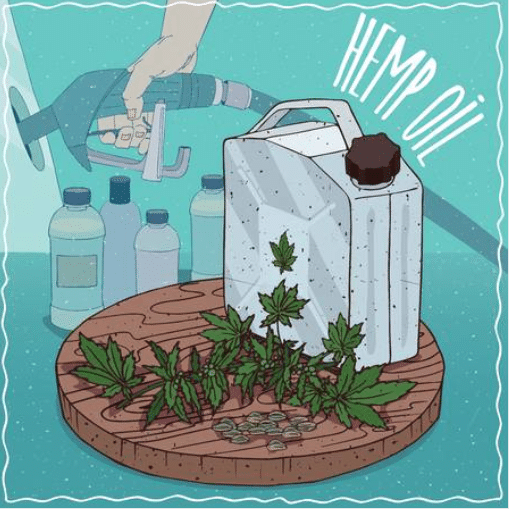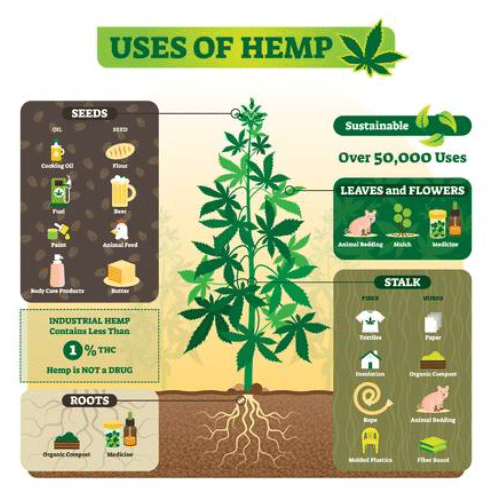- Your cart is empty
- Continue Shopping
HEMP THE NEW SOURCE OF RENEWABLE ENERGY
HEMP THE NEW SOURCE OF RENEWABLE ENERGY
Industrial hemp, or homegrown cannabis, has properties that make it a source for producing biodiesel. There were worldwide push towards the use of sustainable energy sources to scale back the credence of harmful fossil fuels. This move has led to raising the amount of research into energy sources, and hemp has shown the potential to be one. Hemp has been used for years for food, medicine, textiles, paper, and other purposes around the world. Within the coming years, there is an honest chance that is powering up homes and vehicles.
How hemp is converted into fuel
Hemp biodiesel is formed using the oil extracted from crushed hemp seeds during a process referred to as transesterification. From a study, 97 percent of hemp oil was converted into bio diesel, which may be a higher rate of conversion than any biodiesel on the exchange. The hemp biodiesel also passed all lab tests. It even showed properties that suggest they are often used at a lower temp than any biodiesel. With more research and connection between different stakeholders within the global energy industry, it is not hard to see our planet where hemp biodiesel is going to be used everywhere by vehicle owners and homeowners trying to find a more sustainable source of energy. If all goes well, we will be ready to find a gasoline station where we will buy hemp biodiesel, albeit we are stranded within the middle of nowhere. It is safely transportable, so are often included during a car’s emergency kit.
Why hemp makes a perfect biofuel
Almost every sort of plant is often converted into biofuel, but what makes hemp a category above the remainder is its ability to grow in infertile soils. The present major biodiesel plants include food crops like olives, peanuts, soybeans, and rapeseed, all of which require fertile grounds to grow. Using these plants as biofuel means people would need to sacrifice fertile land for fuel production as against food production, which makes it unsustainable.
Hemp, on the other hand, can grow in an infertile area, leaving the high-quality land for crops. Hemp also requires less energy, water, and compost, making it one of the plants to grow. Hemp is additionally immune to drought, pests, and erosion, which suggests it can survive in most parts of the planet. The energy yield of hemp for biofuel creation is similar or superior to most energy crops, which strengthens its competitive position against maize, sugar beets, and other plants for solid biofuel production. With its high biomass yield and its ability to suit easily into existing crop rotations, hemp is predicted to enrich and exceed the different energy crops.
Although promising research shows the vast potential of hemp as an energy crop, it is up to governments and major stakeholders within the energy industry to try to do what must be done to make sure that folks can drive hemp-powered cars and sleep in hemp-powered homes within the near future.
Bio Energy
Bio Energy is the fastest-growing source of renewable energy. Farming energy crops on the arable ground can decrease yoke on depleting fossil resources, and it can mitigate global climate change.
However, some biofuel crops have adverse environmental effects: they use an excessive amount of water, displace people, and make more emissions than they save. This has led to a requirement for high-yielding energy crops with low environmental impact. Industrial hemp is claimed to be just that.
Enthusiasts are promoting the utilization of commercial hemp for producing bio energy for an extended time now. With its high biomass yield and its propriety to suit existing crop rotations, hemp could not only complement but exceed other energy crops.
Hemp originates from western Asia and India and from there spread around the globe. For hundreds of years, fibers were wont to make ropes, cloth, and paper, while cannabis seeds were used for protein-rich food and feed. Interest in hemp declined when other threads replaced hemp.
Abuse of the plant as a drug led to the ban of its farming by the United Nations in 1961. When the ban was revoked within the 1990s within the E.U., Canada, and later in Australia, used hemp emerged again.
The car industry’s interest in light fiber promoted its use. For such modern use, modern varieties with remote content of psychoactive compounds are grown. However, industrial hemp cultivation remains prohibited in some advanced countries like Norway and, therefore, the USA.
The energy use of commercial hemp is minimal today. There are few countries during which hemp has been commercialized as an energy crop. Sweden is one and features a small commercial production of hemp briquettes. Hemp briquettes are costlier than wood base but sell evenly well on regional markets.
Hemp on Large-scale energy use
Biogas production from hemp could compete from maize, commonly in cold climate regions like northern Europe and Canada. Ethanol production is feasible from the entire hemp plant, and biodiesel is often produced from the oil pressed from hemp seeds. Biodiesel from hemp seed oil has been shown to overall have a way lower impact than fossil diesel.
Indeed, the environmental benefits of hemp are praised highly, since hemp cultivation requires minimal amounts of pesticide. Since the plant shades the bottom quickly after sowing, they will outgrow weeds, a trait unusual especially for organic farmers. Still, a weed-free seedbed is required. Moreover, without nitrogen fertilization, hemp will not grow as vigorously as is usually suggested.
Agricultural Practice to Grow Hemp
Being an annual crop, hemp functions all right in crop rotations. Here it is going to function as an opportunity crop, reducing the occurrence of pests, particularly in cereal production. Farmers curious about farming energy crops are often hesitant about tying fields into the assembly of perennial energy crops like the willow. Thanks to the high self-tolerance of hemp, cultivation over two to 3 years within the same area does not cause significant biomass yield losses.
Small-scale production of briquettes from hemp has also proven feasible.
Before creating energy from the deposits, it is surely more environmentally friendly to use fibers, oils, or other compounds of hemp. Even energy within the fiber products is often used when the products become waste.
Recycling plant nutrients, like in biogas residue, can lower greenhouse emissions from crop production.
Sustainable energy production
Sustainable energy production is not easy, and a variety of crops is going to be needed. Industrial hemp isn’t the last word energy crop. Still, if grown on good soil with conventional fertilization, hemp can undoubtedly be an environmentally sound crop for bio energy production and other industrial uses also.
Growing cannabis is simpler than many other plants. The plant is efficient, bred to enhance quality, yield, stress tolerance, and decreased cost per ton. Furthermore, hemp overgrows while also requiring less energy and fertilizer and does not need chemicals after planting. It can even help the farm by cutting the disease cycle of other crops.
Cannabis seeds, often dropped, have the plant’s oils, which will become fuel. Researchers found hemp to provide viable qualities for producing diesel. Hemp biodiesel produced had a 97 percent conversion ability.

For more awareness and news follow me @



